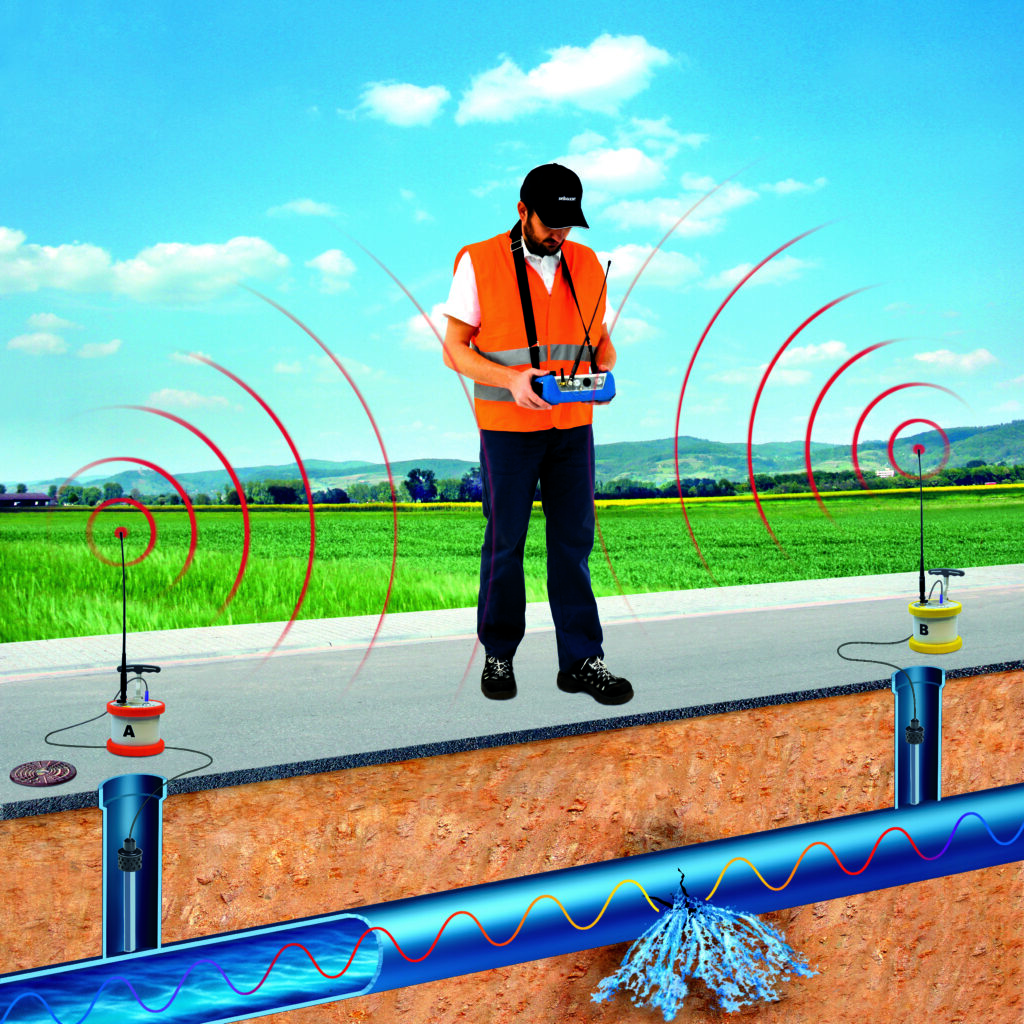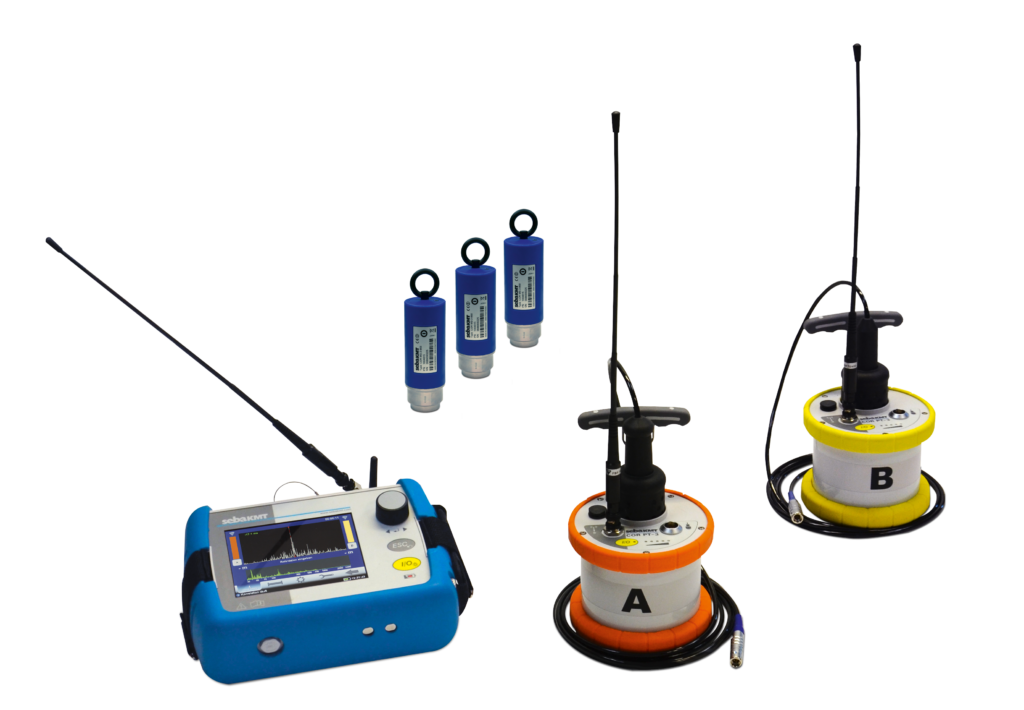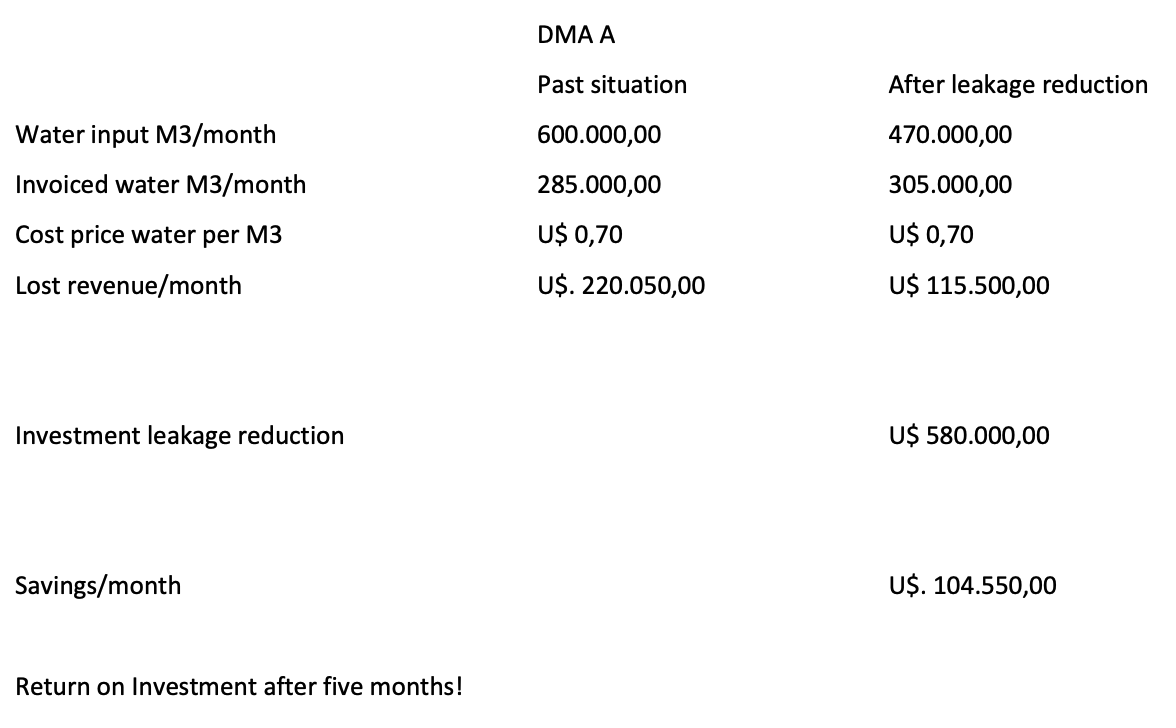The Technimex total solution to reduce Non Revenue Water
Our Method for drastically reducing water losses

Determine Leakage
Before we can start saving water we need to assess where most of the water is leaking. With the equipment from SEBA KMT we can quickly determine where most water is lost.



Together with the water utility we determine which DMA (district metering area) is most suitable to start implementing our intelligent water management system.
Water loss reduction
The pressure level in the network has to be kept and controlled on a minimum level, just enough to maintain the actual water demand. Too low a pressure can cause a pipe vacuum e.g. by booster pumps of high rises causing the ground water to leak into the water pipeline.

Pipe burst reduction
Due to the variations in the demand of water during the day, month and year, the pressure in the network varies too, with a more or less wide amplitude. The amplitude of the pressure variation should be kept as small as possible, to prevent the network from damaging. Pipes have a tendency to always break at night!

Smart water management
Once we have established the DMA where most water is lost we can start working on a solution. We isolate the DMA from the rest of the network and determine the critical point (mostly the point with the highest elevation in the DMA) where a minimum pressure should be maintained at all time. The pressure control is executed by a needle valve (we suggest starting from DN200) or a hydraulic PRV. The larger the pipe diameter, the higher the pressure, the more water we can save. 1% reduction in water pressure results into 1,2 % less leakage!

With the control valve we assure that the minimum pressure is always kept at the critical point under all circumstances .

By adding an actuator we can control how fast the valve opens and closes to prevent water hammer in the network. The valve control unit receives data about downstream-, and upstream pressure, flow, position of the valve and battery condition. The valve control unit sends this data to the server. The pressure at the critical point is sent to the server. Based on the data input at the server, the algorithm of the software sends a signal to the valve control unit to further open or close the valve.
Immediate savings
- Due to lower pressure, water leakage is drastically reduced
- No more pipe breaks because of smooth valve operation
- Electricity consumption of the pumps reduces significantly, the control valve is causing backpressure to the pumps that will slow them down
Safety
- In case of a pipe break the control valve can (automatically) shut down the water supply and thus prevent collateral damage
Self-sufficient
- The actuator can be powered by a hydro generator thus making the unit independent from the power grid and preventing the need to draw power lines
Intelligent
- Self-learning software recognizes the patterns in water consumption in the DMA and reports the anomalies
- Start with one DMA and gradually extend the Smart Water Management to the whole city
- Build in extra features, connect existing loggers
- Total asset control of the whole city
Flexible
- Use of our super guarded Server or your own server
- No annual license fee only a one-off for the programming of the tailor-made software
- Open-source software
- All hardware installed in a container or manhole and supplied ready to operate
Planning
- Our solution reduces water leakage from day one. This allows the water utility to carefully plan the replacement of pipes and other infrastructural cables such as glass fibre, electricity cables etc. with the city council. As the street now only needs to be opened once for installing all pipes and lines at the same time, large amounts of money can be saved and traffic is only hindered once.


Technimex Smart water management = self-financing

We currently calculate with an average cost price of U$ 0,70/M³. This is the pure cost price of water including water treatment, pumping the water through the network and network costs.
A water distribution pipe network is designed to have a lifetime of 50 years. This means that 2% of the existing network needs to be replaced each year. With a growing world population and the need for new urbanization this 2% is not being achieved in 95% of the world. Consequently water leakage is becoming a major issue worldwide.
See below a calculation example:

